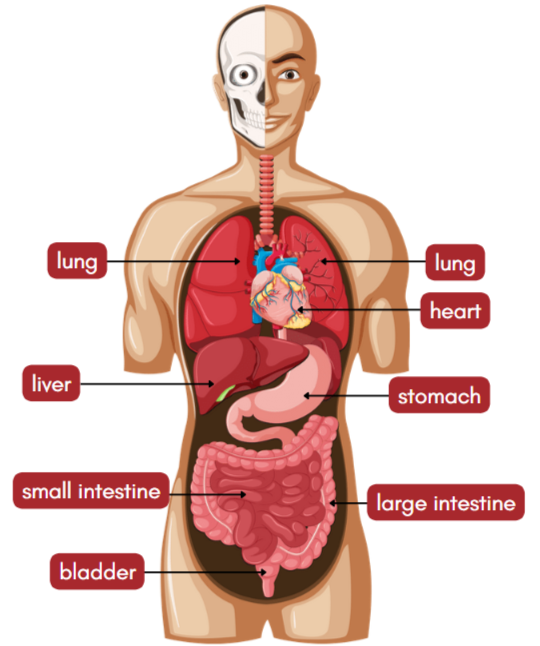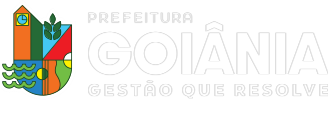Esta proposta de atividade de LÍNGUA INGLESA é destinada aos estudantes do 5° Período da Educação de Jovens e Adultos – EJA.

Disponível em: https://www.canva.com/design/DAFq9Y-_j3I/vrWtUSKOrPokreLA2HryLw/edit , acesso em 05, Ago. 2023
Human Body
In the realm of flesh and bone,
A symphony of parts we own,
Each with purpose, each with grace,
A wondrous dance in life’s embrace.
Tradução
No reino de carne e osso,
Uma sinfonia de partes possuímos,
Cada uma com propósito, cada uma com graça,
Uma dança maravilhosa no abraço da vida.
Leia o texto abaixo sobre Human Body e responda as questões sobre o mesmo:
Cells, Organs, and Tissues: The human body is composed of trillions of cells, which are organized into tissues, organs, and organ systems. Tissues are groups of similar cells that perform a specific function, and organs are collections of tissues that work together to carry out particular tasks. Organ systems, such as the cardiovascular system, respiratory system, and nervous system, collaborate to maintain the body’s functions.
Water Content: Around 60% of the human body is indeed composed of water. Water plays a vital role in various bodily functions, including transporting nutrients, regulating temperature, and facilitating chemical reactions.
Bone Development: Babies are born with around 270 bones. As they grow, some of these bones fuse together, leading to a decrease in the total number. By adulthood, the number of bones usually becomes 206 due to this fusion process.
The Brain: The brain is the central control center of the body. It receives and processes information from the five senses: sight, hearing, smell, taste, and touch. It also controls involuntary bodily functions like breathing and heartbeat, as well as higher functions like reasoning, emotions, and memory.
The Heart: The heart is a muscular organ responsible for pumping blood throughout the body. Blood carries oxygen and nutrients to cells and removes waste products. The heart’s rhythmic contractions, or heartbeat, keep the circulatory system functioning and provide the body with the necessary oxygen and nutrients to survive.
Senses: The five senses—sight, hearing, smell, taste, and touch—play a crucial role in how humans perceive and interact with the world around them. These senses allow us to gather information from our environment and respond accordingly.
QUESTION 01
Qual é a função principal do coração no corpo humano?
a) Produzir hormônios para o crescimento e desenvolvimento.
b) Bombear sangue por todo o corpo para fornecer oxigênio e nutrientes.
c) Regular a temperatura corporal e manter o equilíbrio hídrico.
d) Controlar os movimentos voluntários dos músculos.
QUESTION 2
Qual é o papel do cérebro no processamento das informações dos cinco sentidos?
a) O cérebro controla a frequência cardíaca e a circulação sanguínea.
b) O cérebro processa e interpreta informações do sistema digestivo.
c) O cérebro recebe e analisa informações da visão, audição, olfato, paladar e tato.
d) O cérebro gera energia para o corpo através da respiração celular.
QUESTION 3
De acordo com o texto, como a intrincada interação entre células, tecidos, órgãos e sistemas de órgãos contribui para o funcionamento geral do corpo humano?
QUESTION 4
Quais são os fatores que impulsionam a fusão dos ossos, e como essa adaptação se relaciona com o crescimento e as necessidades de sustentação do corpo?
QUESTION 5
Ligue os organs à suas devidas posições no corpo humano:
Question 6
Encontre os organs abaixo no caça – palavras :
| Autoria: | Sueidy Lourencio |
| Formação: | Letras Portuguese/Inglês |
| Componente Curricular: | Língua Inglesa |
| Habilidades: | (EJALI0512) Adquirir e ampliar vocabulário referente a opiniões, preferências, datas comemorativas, partes do corpo, esportes, meses do ano, hobbies e rotina (EJALI0513) Desenvolver estratégias de leitura e compreensão dos textos narrativos desenvolver habilidades comunicativas. |
| Referencial Teórico: | BRASIL. Ministério da Educação. Base Nacional Comum Curricular. Brasília, 2018.Goiânia. Documento Curricular Eja – 2023. Educação Física. Secretaria Municipal de Educação e Esporte. 2023Goiânia. Documento Curricular Para a Rede Municipal de Educação de Goiânia – EJA. Secretaria Municipal de Educação e Esporte. 2023Goiânia. Organização Pedagógica da EJA – 2023. Secretaria Municipal de Educação e Esporte. 2022Lei Federal n. 8069, de 13 de julho de 1990. ECA _ Estatuto da Criança e do Adolescente. |
